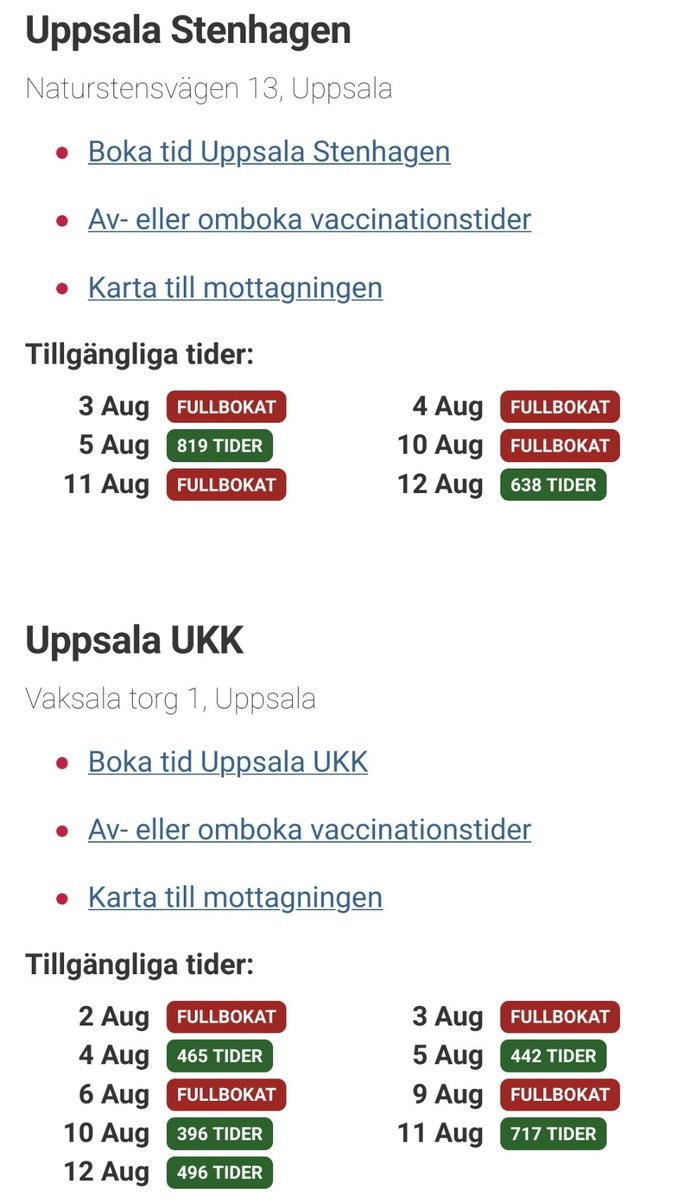
Alla (>18 år) som vill ha en dos [dvs dos 1 eller 2] #Moderna kan nu boka tid för vaccination i region Uppsala, fr.o.m. idag.
”Bakgrunden till beslutet är att vi har gott om Moderna-vaccin"
Moderna är ett mycket effektivt mRNA-vaccin mot COVID-19
🧵->
svd.se/uppsala-erbjud…
”Bakgrunden till beslutet är att vi har gott om Moderna-vaccin"
Moderna är ett mycket effektivt mRNA-vaccin mot COVID-19
🧵->
svd.se/uppsala-erbjud…
3) Liksom Pfizer tycks effekten för Moderna mot sjukhuskrävande COVID-19 orsakad av SARS-CoV-2-varianten Delta mycket god (punkt 3 nedan)
Dock tycks mRNA-vaccinens/AZs skydd mot övriga former (symptomatisk & asymptomatisk) av COVID-19 av delta sämre
drcedernaes.com/2021/07/covid-…
Dock tycks mRNA-vaccinens/AZs skydd mot övriga former (symptomatisk & asymptomatisk) av COVID-19 av delta sämre
drcedernaes.com/2021/07/covid-…

4)Som vaccinerad får man även (i snitt) vid ev. COVID-19 mildare akuta symptom: nejm.org/doi/full/10.10… (punkt 1 i blogginlägget)
Oklart hur detta påverkas av deltavarianten (B.1.617.2), men ev. liknande om man utgår från viral load-data i denna preprint:
Oklart hur detta påverkas av deltavarianten (B.1.617.2), men ev. liknande om man utgår från viral load-data i denna preprint:
https://twitter.com/JCedernaes/status/1421537839997652995?s=20
5) Notera att deltavarianten tycks kunna ge högre risk för smitta som vaccinerad (inklusive asymptomatisk smitta)
Och även om man inte själv blir svårt sjuk, finns det de med sämre immunförsvar som riskerar bli svårt sjuka.
Och även om man inte själv blir svårt sjuk, finns det de med sämre immunförsvar som riskerar bli svårt sjuka.
https://twitter.com/EricTopol/status/1421154043422863360?s=20
• • •
Missing some Tweet in this thread? You can try to
force a refresh







